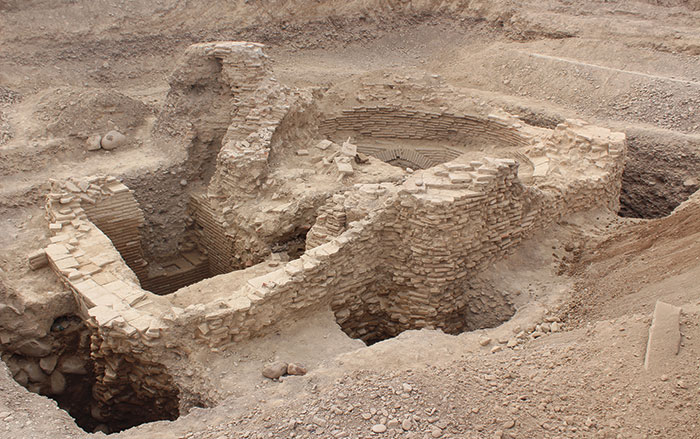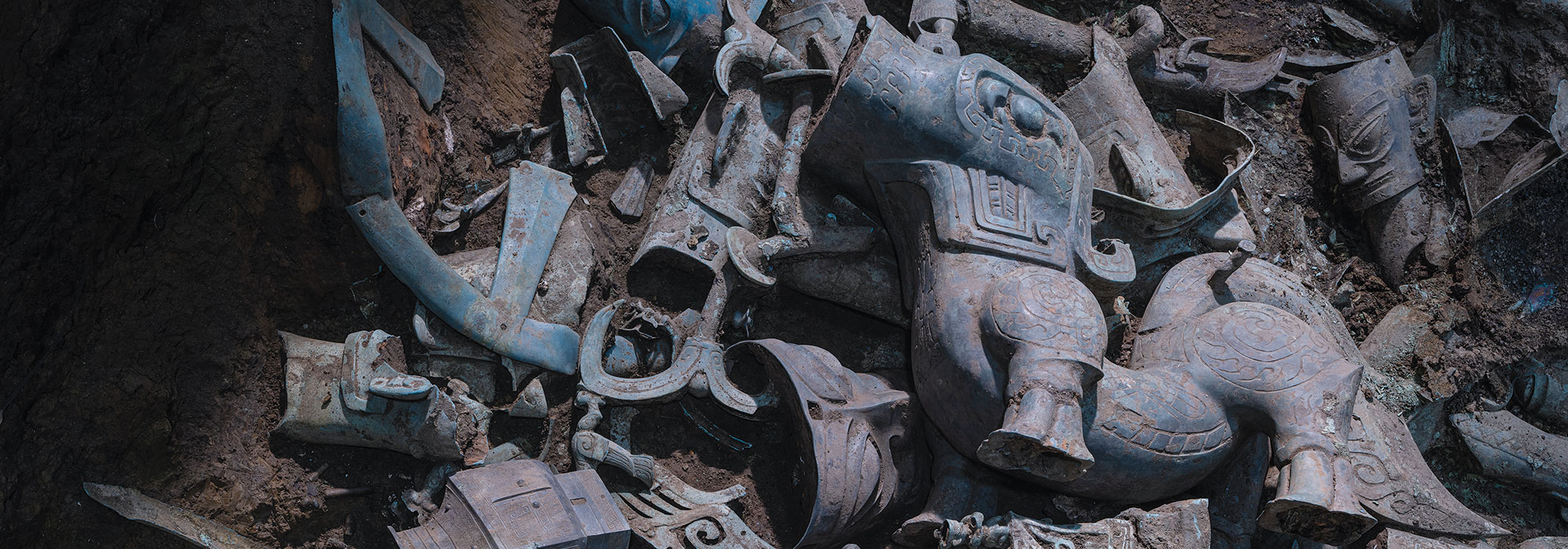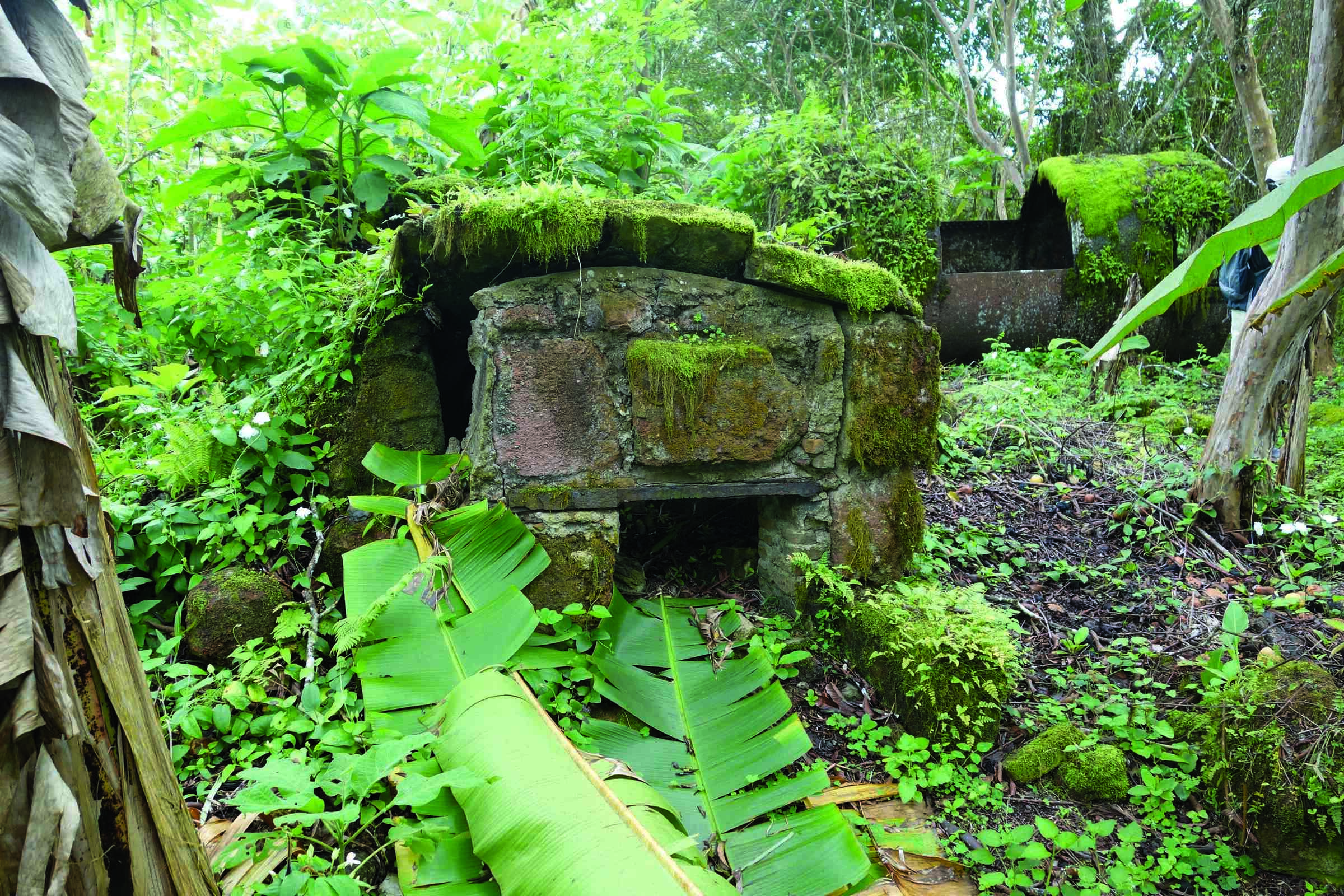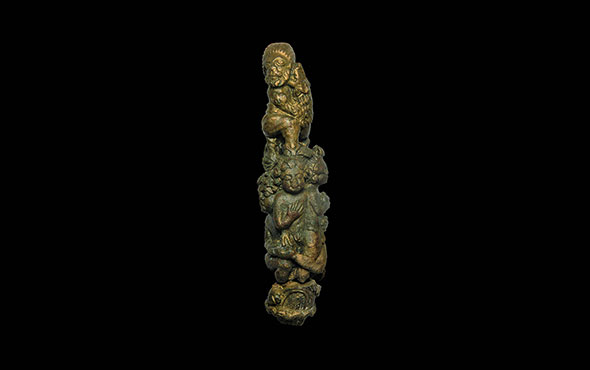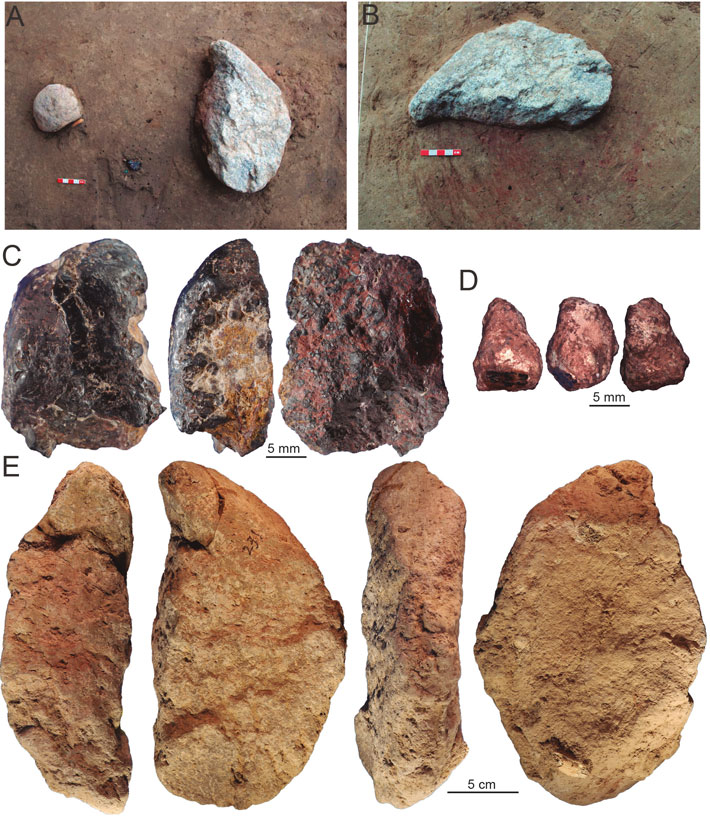
JENA, GERMANY—Science Magazine reports that 40,000-year-old stone artifacts, bits of animal bones, remnants of a campfire, and ground ochre in red, purple, and gray have been uncovered in northeastern China at the site of Xiamabei by a team of researchers led by Shixia Yang of the Max Planck Institute and the Chinese Academy of Sciences and Fa-Gang Wang of the Hebei Provincial Institute of Cultural Relics and Archaeology. Processing ochre for use in rock art, and as an ingredient in adhesives, sunscreen, and insect repellent, requires knowledge and skill, and so evidence of ochre processing is considered a marker for modern human behavior. Analysis of the artifacts and soil at the site indicates that ochre was ground, polished, and pounded to create distinct colors and grain sizes, while chert and quartz pebbles less than an inch long were broken to create sharp edges, and hafted onto bone handles, perhaps to scrape hides and work wood. Yang said these artifacts are “totally different” from those found at other sites of the same age in the region. She thinks the people who worked at the Xiamabei workshop may have encountered other human groups as they migrated to East Asia from Eurasia. Such interactions may have led to this unique assortment of artifacts, Shixia explained. To read about 125,000-year-old incisions on bone that were rubbed with ochre to make them more visible, go to "World Roundup: China."




